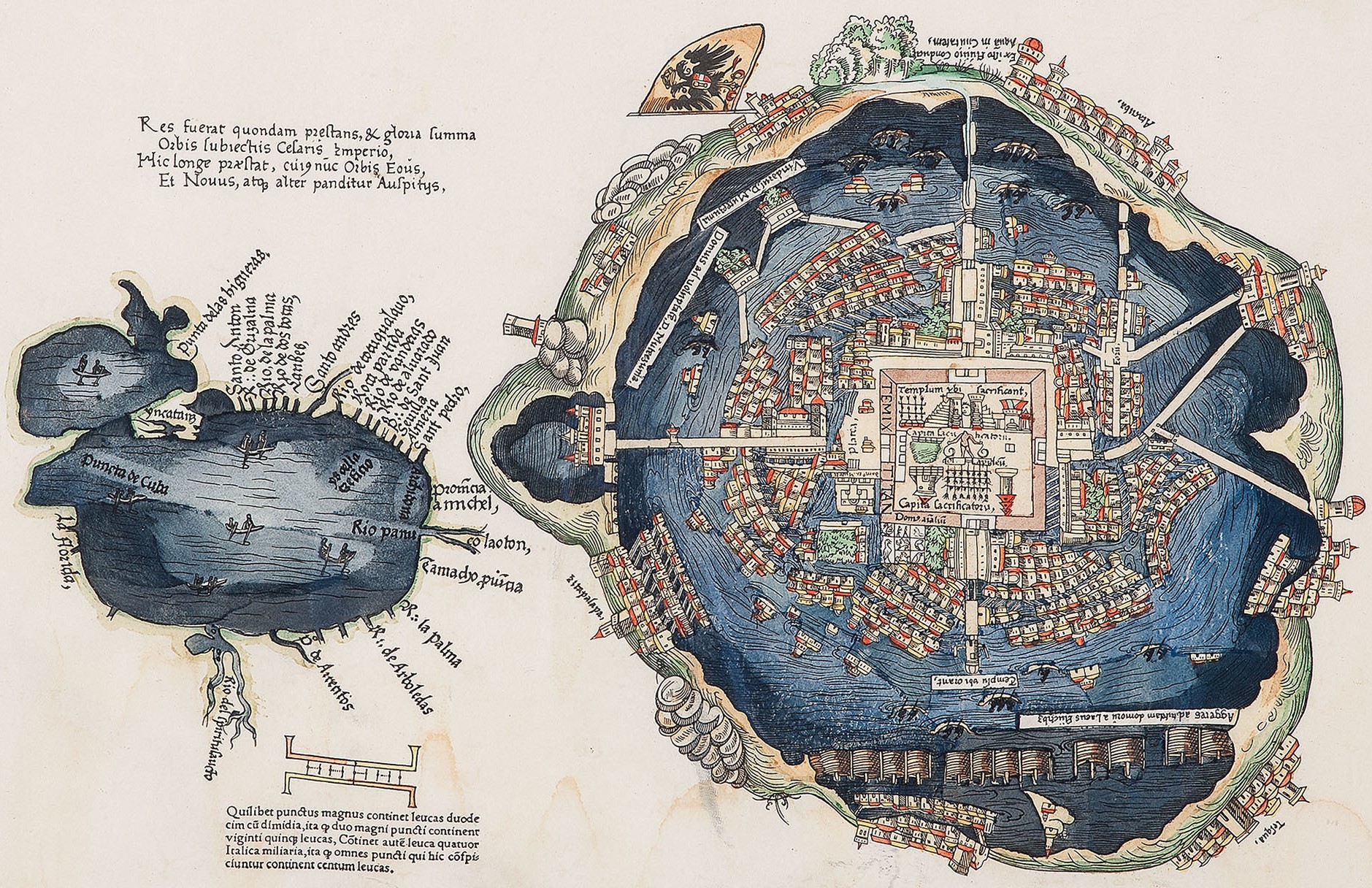
New World Encounters
This site shares the final student projects from History 173, New World Encounters, taught by Prof. Katharine Olson in Spring 2025.
This class offered a survey of the encounters between Europeans and the indigenous peoples of the Americas (with a focus on those areas which today comprise United States, Mexico, Canada, and Peru), c.1500-1800. It examined contemporary ideas and popular perceptions of “otherness” and difference, race, religion, indigenous cultures and socities, identity, tolerance, intolerance, and much more, using digital humanities tools and methods and an ethnic studies perspective. It was designed with the generous support of a Digital Ethnic Futures Consortium Teaching Fellowship funded by the Andrew Mellon Foundation.
We explored the history of European exploration in the Americas; ideas of wider world, maps, and travel narratives; Columbus, Vespucci, the Americas, early Spanish exploration, and its impact on indigenous peoples and societies; the Aztecs, Incas, their societies and cultures; the conquistadors, the Spanish Empire, the conquest of Mexico, and its impact on indigenous societies and cultures; English settlement in North America and interactions with the Wampanoag and other indigenous peoples from Jamestown and Roanoake to New England; indigenous cultures and societies in North America; Spanish settlements and missions in Florida and California, and interactions with the indigenous peoples; French missions and interactions with the indigenous peoples of Canada, and the experiences of enslaved persons of African descent in the Caribbean and Americas and their religions, cultures, societies, and traditions.
Final Student Projects
- The Age of Exploration and the Consequences of Colonization (Daniel Pedroza-Caballes)
- Christianity and Indigenous Responses in the New World (Michael Min)
- Chronicle of Conquest: The Spanish-Aztec War in Perspective (Rose Schemmel)
- Colonial Encounters and Indigenous Agency: Patterns of Diplomacy, Betrayal, and Warfare in Early America (Ben Summers)
- Cultural and Religious Customs in Ancient Civilizations (Chris Galvan)
- Death Ritual & Cannibalism in the New World (Minh Chung)
- European Pre-Colonial and Colonial Military Expansion and Warfare (Kevin Vu)
- Final Project: New World Encounters (Jade Collins)
- Final Project: New World Encounters (Jonathan Nguyen)
- Final Project: New World Encounters (Juan Rowda)
- Final project: New World Encounters (Roman Castro)
- The Fur Trade Within Colonial Times (Skylla Larson)
- Life and Cultural Elements in Pre-Conquest Indigenous Societies (Jennifer Aguilar)
- Missionary Work in Mexico, New France, and the Andes (Cliff Wong)
- New World Encounters and Disease (Madeline Chan)
- New World Encounters: Their Impact (Angelica Ortiz)
- Sacred Encounters: The Fate of Indigenous Religions upon Contact with Europe (Brendan Kroning)
- Slavery in the New World (Sophia Nguyen)
- Understanding the Lasting Effects of Conversion in the New World (Mirann Mangino)
Statement on Harmful Content
This site contains content that may be harmful or difficult to view. The student projects that make up this site have included a wide variety of historical and interdisciplinary materials, as well as artifacts from many cultures and time periods. As a result, some of the materials presented here may reflect outdated, biased, offensive, and possibly violent views and opinions due to pervasive systemic intolerance.
These projects represent the research, interpretation, and perspectives of the individual students who have created them.